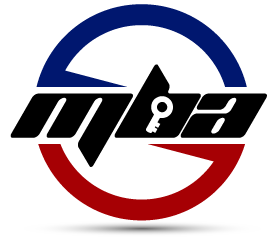In this Lightning Cast, we discuss the Business Analyst career path. It might not be what you expect.
A Lightning Cast is a shorter form episode modeled after lightning talks. You’ll get valuable content in 8 minutes or less.
I’m often asked what the Business Analyst career path looks like. A common misconception is that your career is a straight line where in reality, there are many twists and turns.
The question is what does career growth mean to you?

Career growth isn’t necessarily just moving up. It can include things like lateral moves. We can move from one position to another at the same level. These moves give you a variety of experienced and allow you to grow and develop new skills.
Career growth also includes the traditional path of moving up to higher level roles. That can be from business analyst to senior business analyst to business architect. Each stage will require development of new skills and the ability to expand your influence. You will likely need to move from tactical to strategic to offer greater benefits your organization.
Sometimes career growth involves relocation. You may need to move outside your company or to a different facility within your organization to explore different career opportunities. Be careful with this because you don’t want to be seen as a job hopper. You want to stay with the role long enough to develop good skills and foundational practices. This usually takes 18 months to two years.
Career growth may also involve exploring your current role. Explore the edges and parameters of your role as well as related roles. If you’re a business analyst, that may include working with and exploring roles such as project manager, product owner, and user experience designer. By working closely with people in these roles, you can pick up some of the techniques, skills, and practices of those roles. That allows you to further develop and enhance your skill set.
One thing that people often don’t consider is that true growth also includes realignment. That may mean taking a step down from your current role to explore a different role. For example, if you’re a senior business analyst and want to explore project management, it might not be a lateral move to senior project manager. You may have to start at the bottom of that role. However, if you can apply the skills and techniques you’ve developed is BA, you can likely accelerate your growth and career trajectory.
Finally, career growth may include enrichment. That means staying within your role and developing those core skills that make you great. For a Business Analyst, that might mean developing your elicitation techniques, communication skills, facilitation, and influence.
You may feel that your career is going through peaks and valleys and even plateau at some point. Those plateaus are enrichment opportunities . . . a way for you to develop your skills in the foundational practices. Think of it as a platform where you can jump to a higher level.
The Train Map
I like to think of the BA career path not as a straight line, but as a train map with different stops, stations, and transfers along the way. I consider four different starting points:
- A traditional business analyst aligned to the business side and works in a traditional environment
- Business analyst in an agile environment
- Business systems analyst aligned to the technology group
- Project management

The traditional business analyst may go from BA to senior business analyst, to architect, to senior business architect and so on. Similarly, in an agile environment you may go from business analyst to product owner and possibly branch off to managing a team and then PMO director. From there, you may climb to vice president, senior vice president, and CIO.
A Business Systems Analyst may become a senior analysts and then a technology architect or an enterprise architect. From Project Manager, you may go to senior project manager, to program manager, to business owner, and so on.
One path isn’t necessarily better than the other. There are a variety of different options you can explore.
To continue in the train analogy, to get to each of the stops and transfer between stations, you need to buy a ticket. Each of those tickets will require you to develop different skills.
As I mentioned earlier, to get from a senior business analyst to a business architect, you’ll need to switch from tactical to strategic, from inward focused to outward focus, and have a holistic view of the organization. To shift from business analyst to product owner, you need develop different leadership skills, have a customer focus, and decision-making authority.
As you move up to higher levels in the organization, you will need to move outside the project box and think more holistically to contribute more value to your organization.
What’s your desired destination and what does it take to get there?
Thank you for listening to the program
To get more valuable content to enhance your skills and advance your career, you can subscribe on iTunes and other podcatchers.
Also, reviews on iTunes are highly appreciated! I read each review and it helps keep me motivated to continue to bring you valuable content each week.







